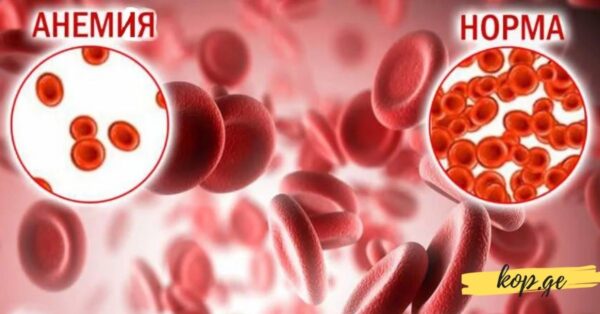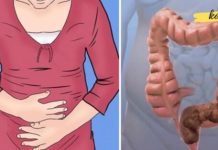What Happens to the Body When Iron Levels Are Low? Important Information

Iron is one of the most essential minerals in the human body — a crucial building block that supports the transport of oxygen and energy production in every cell. When iron levels drop too low, the body struggles to perform its normal functions efficiently. Over time, this deficiency can lead to a condition known as iron-deficiency anemia, one of the most common nutritional disorders worldwide.
The primary and most recognizable symptom of low iron is chronic fatigue. People often describe it as an overwhelming tiredness that doesn’t go away even after rest. However, the effects of low iron go much deeper than just tiredness — it can impact your brain, muscles, immune system, and even your appearance. Recognizing and treating the problem early can prevent long-term complications and restore your overall vitality.
Why Is Iron So Important?
Iron plays a vital role in the production of hemoglobin, the protein molecule inside red blood cells responsible for carrying oxygen from the lungs to all parts of the body. Without enough iron, your body can’t produce sufficient healthy red blood cells, and as a result, less oxygen reaches your tissues and organs.
Oxygen is the fuel for all cellular processes — it powers your brain, muscles, and metabolism. Therefore, when oxygen supply decreases due to low iron, the entire system slows down. The heart must work harder to deliver oxygen, the brain becomes foggy, and muscles tire quickly.
Iron is also important for:
Maintaining healthy skin, hair, and nails
Supporting immune function and resistance to infections
Promoting proper cognitive and memory function
Assisting in hormone balance and energy production
Common Causes of Low Iron Levels
There are several possible reasons why iron levels might drop. Some are temporary and easy to fix, while others may signal an underlying medical issue.
Blood Loss:
This is one of the most common causes of iron deficiency. Women are especially prone to it due to menstruation, pregnancy, or childbirth. Even minor but chronic blood loss, such as bleeding ulcers or hemorrhoids, can gradually deplete iron stores.
Poor Diet:
Iron is mainly absorbed from foods like red meat, poultry, and fish. People who follow strict vegetarian or vegan diets without proper supplementation often experience low iron levels, since plant-based iron (non-heme iron) is less efficiently absorbed by the body.
Digestive Disorders:
Conditions such as celiac disease, Crohn’s disease, or ulcerative colitis can impair nutrient absorption in the intestines, including iron. Similarly, people who have undergone certain gastrointestinal surgeries (like gastric bypass) may also have trouble absorbing enough iron.
Increased Iron Demand:
Growing children, teenagers, and pregnant women require higher amounts of iron to support rapid growth and development. Without sufficient intake, deficiencies can develop quickly.
Medications or Chronic Illnesses:
Certain medications that reduce stomach acid (like proton pump inhibitors) can lower iron absorption. Chronic conditions such as kidney disease or cancer can also affect iron metabolism.
Symptoms of Iron Deficiency
In the early stages, iron deficiency can be silent — you may not notice any clear symptoms. However, as the deficiency worsens and anemia develops, the signs become more obvious and harder to ignore.
Common symptoms include:
Persistent fatigue and weakness
Pale or dull skin and cold hands and feet
Shortness of breath during mild exertion
Dizziness or headaches
Rapid or irregular heartbeat
Hair loss and brittle nails
Reduced appetite (especially in children)
Irritability or difficulty concentrating
Cravings for non-food items such as ice, dirt, or paper (a condition called pica)
When these symptoms persist, it’s important to consult a doctor rather than self-diagnose.
Diagnosis and Medical Evaluation
Diagnosing iron deficiency is relatively simple. A blood test can measure your hemoglobin, hematocrit, and ferritin (the protein that stores iron in the body). Low ferritin levels typically indicate depleted iron reserves.
However, identifying the cause of low iron is equally crucial. Depending on your symptoms and medical history, your doctor may order additional tests such as:
A stool test to detect hidden blood loss
A colonoscopy or endoscopy to check for ulcers or intestinal bleeding
Tests for celiac disease or other absorption disorders
Understanding the root cause ensures the right treatment and helps prevent future deficiencies.
How to Treat and Prevent Iron Deficiency
Once iron deficiency is diagnosed, treatment involves two key steps: restoring iron levels and addressing the underlying cause.
Dietary Adjustments:
A balanced diet is the foundation of prevention. Include both heme iron (found in animal products) and non-heme iron (found in plant foods) in your meals.
Heme iron sources: Red meat, chicken, turkey, liver, and fish.
Non-heme iron sources: Lentils, beans, spinach, tofu, quinoa, pumpkin seeds, and fortified cereals.
To improve absorption, pair iron-rich foods with vitamin C sources like oranges, kiwis, bell peppers, or lemon juice. Avoid consuming coffee, tea, or dairy immediately after iron-rich meals, as they can inhibit absorption.
Iron Supplements:
In moderate to severe cases, your doctor may recommend iron supplements in pill or liquid form. These should always be taken under medical supervision since excessive iron can cause toxicity.
Treating Underlying Conditions:
If digestive disorders, ulcers, or heavy menstrual bleeding are responsible, treating those problems will be essential to maintaining normal iron levels.
Regular Monitoring:
Follow-up blood tests every few months ensure that iron levels are returning to normal. Consistency is key — even when you start feeling better, your body still needs time to replenish its stores.
The Long-Term Impact of Low Iron
Ignoring low iron levels can lead to chronic anemia, which weakens the heart, reduces cognitive performance, and increases vulnerability to infections. In pregnant women, severe deficiency can result in premature birth or low birth weight. In children, it may delay growth and impair learning ability.
The good news is that iron deficiency is both preventable and treatable. With proper nutrition, timely medical care, and awareness of your body’s signals, you can protect your health and energy for years to come.
In summary:
Low iron levels may seem like a minor issue at first, but their effects ripple through the entire body. Fatigue, weakness, pale skin, and hair loss are not just cosmetic concerns — they are signs that your body is struggling to deliver oxygen where it’s needed most. Listen to those signs, take action early, and give your body the nutrients it needs to stay strong, balanced, and full of life.












